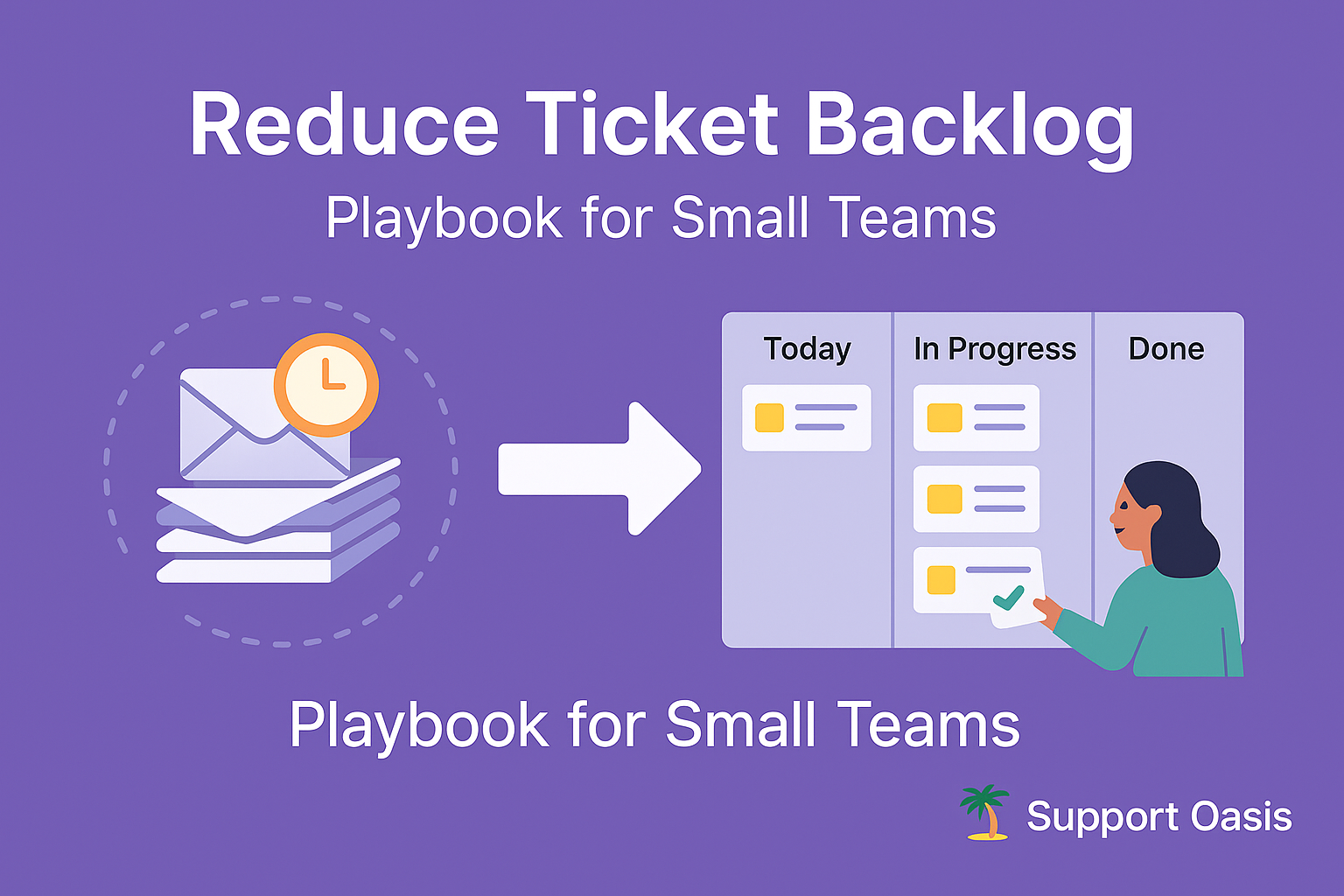Teams can reduce ticket backlog with a clear process, simple rules, and steady habits. As a result, agents focus on the right work, customers get timely updates, and leaders see progress every day. In addition, a small set of tools keeps the system easy to run.
Reduce Ticket Backlog: Quick Wins
Start with a few moves that create immediate flow. First, route by keywords and sender domain so tickets land with the right owner. Next, add three priorities so urgent issues skip the line. Then, tag by product area for fast reporting. Consequently, new tickets stop piling up and old ones move again.
Shrink the backlog with triage
Set rules such as “billing” to Finance and “cannot log in” to Support. Meanwhile, keep VIP domains at High priority. In addition, create views for Today, Overdue, and Waiting on customer. Therefore, every agent knows what to do first, what to chase, and what can wait.
Daily Backlog Rituals for Small Teams
Consistency beats sprints. Each morning, scan Overdue and reassign stuck work. After lunch, clear Waiting on customer with one follow-up. Before sign-off, close solved tickets and archive duplicates. As a result, the queue stays current and signals stay clean.
Clear the queue with saved replies
Templates cut typing and keep tone steady. For examples you can copy, see Helpdesk Saved Replies: 15 Templates for Small Teams. In addition, personalize the first line so replies feel human.
Tools and Setup That Prevent Backlog
Keep the stack simple so agents move fast. If you are still on a shared inbox, compare options in Shared Inbox vs Helpdesk: Which Is Better for Small Teams?. To launch quickly, use How to Set Up a Helpdesk for Your Small Team in One Day. For an email-first approach that avoids bloat, read Email-Based Helpdesk: Simple Setup for Small Teams.
According to The Value of Customer Experience, Quantified from Harvard Business Review, faster, clearer communication improves loyalty and revenue. Therefore, reducing backlog is not only an operational win but also a growth lever.
Targets That Keep Backlog Low
Set goals you can hit now, then raise them later.
- First reply: within 1 hour for High, within 4 hours for Normal.
- Resolution: same day for High, next business day for Normal.
- Backlog trend: finish Friday with fewer open tickets than Monday.
Because targets guide behavior, include them in onboarding and weekly reviews.
Cut backlog by removing rework
Measure reopen rate and long-wait outliers. Then fix root causes with clearer templates, better tags, or a quick status page link. Consequently, fewer tickets bounce back and the queue stays light.
Common Backlog Traps and Fixes
- Tracking too many priorities. Instead, use High, Normal, and Low.
- Letting “Waiting on customer” go stale. Therefore, auto-remind after two days and close after seven.
- Writing long replies. In addition, link to one resource rather than three.
- No owner for the process. Finally, assign a single person to review the queue daily.
Final Thoughts
To reduce ticket backlog, keep rules simple, run daily rituals, and publish clear targets. In conclusion, move work to the right owner, reply with concise templates, and measure what improves speed. As a result, customers feel momentum and your team gets its evenings back.
Ready to clear your queue?
Try Support Oasis for free to launch email routing, priorities, tags, and saved replies in minutes. Try for free or learn more about Support Oasis.
